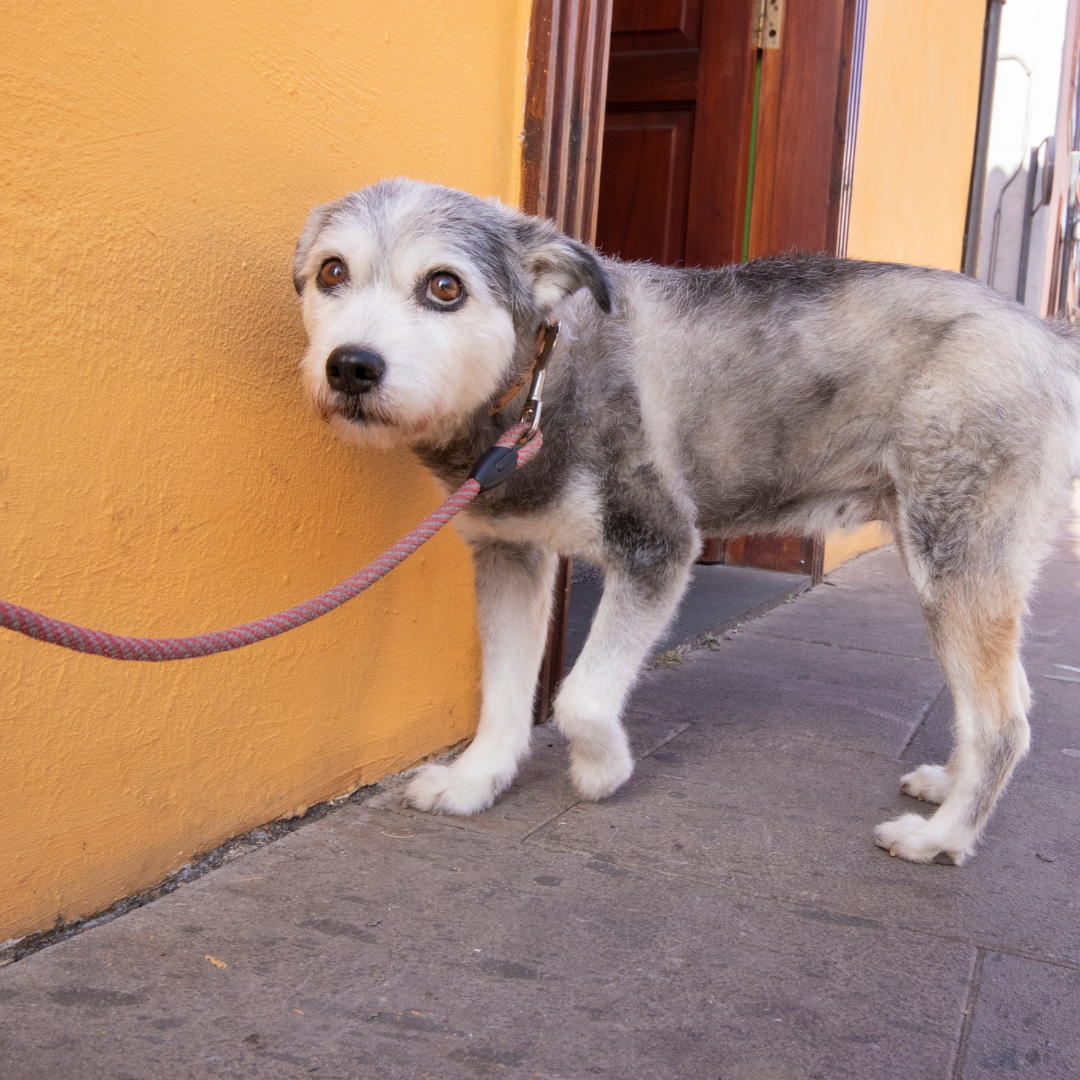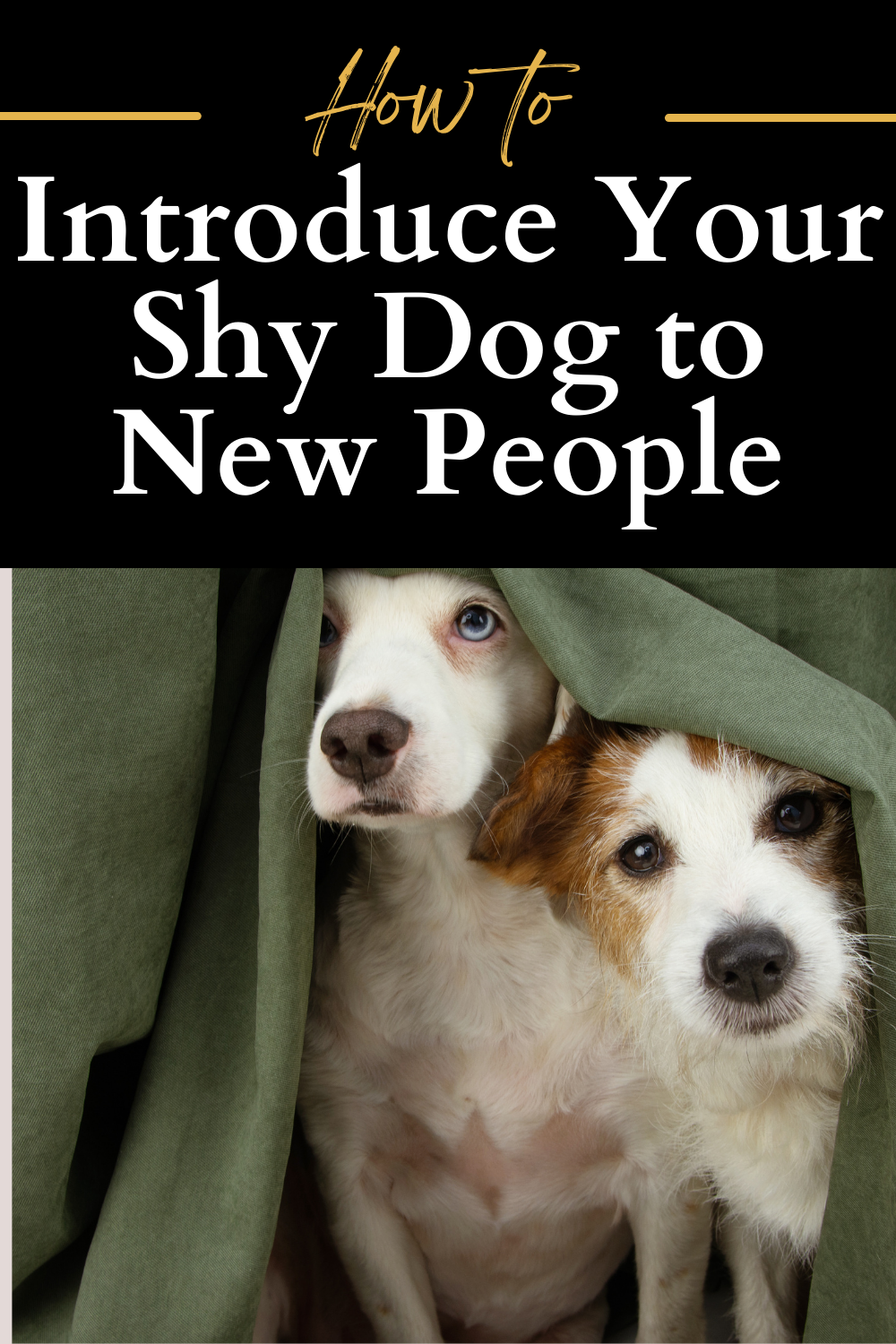I get it. You’re walking down the street and see an adorable puppy or dog, and instantly want to pet them. We need to remember though that not every dog WANTS us to greet or pet them (sorry). As the dogs owner, it’s important that you introduce your dog to new people the RIGHT way.
This needs to include letting the dog decide if it wants to approach and be touched by this new person.
This article was inspired by a recent client of mine, Aspen. Meet Aspen!

He had a rough start to life and missed his critical socialization window completely (he was kenneled the whole time). Due to that, new people are scary. These are the exact steps I suggested his foster mom follow to show him that meeting people can be fun!
In this article we’ll cover:
- What YOU should do when introducing your dog to new people
- What the NEW person should do when being introduced to your dog
- The right way to pet a dog
- Expectations from your dog
Please note- These exercises are for fearful, shy dogs that need confidence building. If you have any concerns that your dog may bite the other person, this isn’t the right protocol to follow!
These steps slowly build positive associations with meeting new people. Dogs learn VERY well by building associations!
Set up the situation properly:
You want to show your fearful dog that meeting new people is fun, not scary!
The best way to do this? Control all new greetings for awhile so that you can ensure that positive associations are built! The easiest way to do this is to set-up planned “meetings” with friends and family so that they know ahead of time what to do.
It’s not impossible to coach a stranger on the sidewalk through these steps, but it is more difficult! You also cannot be as certain they’ll follow them correctly. Therefore, for the first few weeks at least, try to only meet with people you know!
“Won’t I look rude telling people they can’t pet my dog though?”
This is a question I hear often! Short answer: No.
No one else is entitled to automatically greet your dog! I find this is a weird boundary that gets crossed frequently. We’d find it odd if someone insisted on coming up and touching our vehicle…. yet we feel rude if we don’t allow them to greet our dog? As the dog owner it’s your responsibility to speak for your dog. Never feel bad for that!
If you really hate the idea of telling someone no, there are ways to prevent it from happening at all. I often suggest using a leash sleeve or leash that warns people to stay away so that they DON’T even ask 😉

“Do Not Pet” Leash sleeve (Amazon)

Your role in introducing your dog to new people:
Ok, you’ve scheduled some meet-ups with friends and family. Now what?
We’ll cover your role first!
Approach the new person with your dog or puppy on leash (make sure there’s no leash tension!). Watch your dog closely. I want you to stop at a distance where your dog is definitely aware of the person, but not showing big reactions like barking, lunging, cowering, growling or crying. Stay at that distance!
You’ll do an exercise called engage/disengage. During this the “stranger” just stands there quietly (not staring directly at your dog).
Every time your dog glances at them, mark it (read THIS if you have no idea what that means!), and give them a treat. When they glance at the person again, repeat! Do this at least 5x before the “stranger” starts their role. You’re building a positive association that seeing new people = good things happen.
The other person’s role when introducing your dog to new people:
Ask your friend/family member to just stand quietly while you do a few repetitions of engage/disengage. It’s important that they do not stare at the dog, try to call them over, or do any large gestures.
After a few repetitions, your friend takes over!
The new person should have some treats on them already. Get them to stand sideways to the dog and occasionally toss a treat slightly BEHIND the dog without saying anything. By tossing the treat behind they’re giving the dog a chance to disengage (which can relax them) and building associations that stranger=treats without forcing the dog to either approach or interact with the new person in order to get their reward. It’s low pressure on the dog, which we want!
Within 5-10 treat tosses, one of two things may happen: the dog approaches the new person, or the dog doesn’t. Let’s talk about both!

If your dog DOES approach the new person:
Awesome! If your dog chooses to be courageous and approach, that’s great. They feel comfortable enough to say hi, which is what we’re building towards!
Read this:

There are right and wrong ways to pet a dog (especially a skittish one!). Ask your friend/family member to crouch down, avoid making direct eye contact, and stroke their side or back.
Ask them not to talk loudly to the dog, lean over the dog (this can be seen as threatening), or stick their hand directly in your dogs face.
Calm, short interactions are best!
If this happens, let your dog say hi for a minute then walk them away. Give your dog a few minute decompression break, then reapproach that same person for a “real world” practice version. Repeat all the same steps as above, except this time talk & interact with that person during the session! We want to build our dogs confidence for normal human greetings!
If your dog DOESN’T approach the new person:
This is usually the hardest step for most people.
If your dog does not decide to approach after both you and the new person have done your repetitions, say thank you to them and move away.
Part of building confidence in your dog is showing them that they have a choice, and that you’ll respect it. If the dog had wanted to say hi (or felt ready for it), they would’ve!
Still take this session as a win however. Your dog met a new person, stayed calm, and had some positive associations built with meeting strangers. That’s a good thing!!
These are the exact steps I suggest to my clients for introducing a fearful or shy dog to new people.
Happy training 🙂
Disclosure: Happy Hounds uses affiliate links. Purchasing with these links will not cost you any extra, but I get commissions for purchases made through these links. Affiliate links help me to continue to offer free resources & blog posts. I would love if you used them!


+ show Comments
- Hide Comments
add a comment